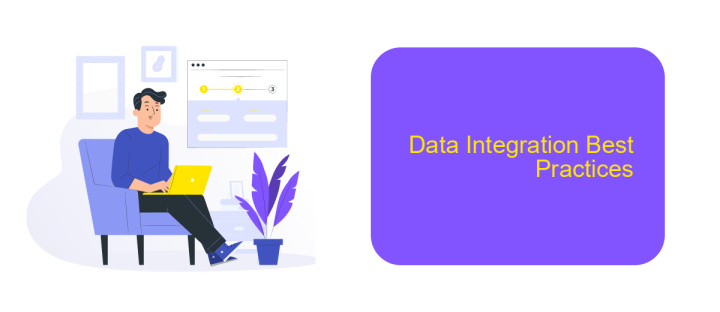Data Integration Job
Data integration is a critical process in today's data-driven world, enabling organizations to combine data from various sources into a unified view. This process enhances decision-making, streamlines operations, and ensures data consistency. In this article, we will explore the role, responsibilities, and skills required for a Data Integration job, highlighting its importance in modern business environments.
Introduction
Data integration is a crucial process in today’s data-driven world, enabling organizations to consolidate information from various sources into a unified view. This process not only streamlines data management but also enhances decision-making capabilities by providing comprehensive insights. Effective data integration ensures that data is accurate, consistent, and accessible, thus supporting the overall operational efficiency of an organization.
- Combines data from multiple sources
- Ensures data consistency and accuracy
- Improves decision-making processes
- Enhances operational efficiency
Utilizing tools like ApiX-Drive can significantly simplify the data integration process. ApiX-Drive offers a user-friendly interface that allows seamless integration of various applications and services without the need for extensive technical expertise. By automating data workflows, ApiX-Drive helps organizations save time and resources, ensuring that data is always up-to-date and synchronized across different platforms.
Data Integration Overview

Data integration is a crucial process in modern businesses, enabling the seamless connection and unification of data from various sources into a coherent and valuable dataset. This process ensures that data from different departments, systems, and applications can be combined and analyzed together, providing a comprehensive view of business operations. Effective data integration helps in improving decision-making, enhancing customer experiences, and streamlining operations by ensuring that all relevant data is available and accessible in a unified format.
There are numerous tools and services available to facilitate data integration, one of which is ApiX-Drive. ApiX-Drive offers a user-friendly platform that simplifies the process of connecting different applications and automating data workflows. With its intuitive interface and extensive library of pre-built integrations, businesses can quickly set up data connections without the need for extensive coding or technical expertise. By leveraging such services, companies can ensure that their data integration processes are efficient, reliable, and scalable, ultimately driving better business outcomes.
Building and Running a Data Integration Job

Building and running a data integration job involves several key steps to ensure seamless data flow between systems. Proper planning, selection of tools, and execution are crucial for the success of the integration process.
- Identify Data Sources: Determine which systems and databases need to be integrated.
- Select Integration Tool: Choose a reliable tool like ApiX-Drive to facilitate the integration process.
- Configure Connections: Set up connections to the data sources and destinations within the chosen tool.
- Map Data Fields: Align data fields from source to destination to ensure accurate data transfer.
- Test Integration: Run initial tests to verify that data is being correctly transferred and transformed.
- Schedule Jobs: Set up automated schedules for the integration jobs to run at specified intervals.
- Monitor and Maintain: Continuously monitor the integration process and make necessary adjustments.
Using a service like ApiX-Drive simplifies the configuration and management of data integration jobs. It provides a user-friendly interface and robust features to handle various data sources, ensuring that your integration processes run smoothly and efficiently.
Data Integration Best Practices

Effective data integration is crucial for ensuring seamless data flow and maintaining data quality across various systems. To achieve this, it's important to follow best practices that enhance the efficiency and reliability of your integration processes.
One of the key practices is to establish clear data governance policies. This includes defining data ownership, access controls, and data quality standards. By doing so, you can ensure that data is consistently accurate and secure throughout its lifecycle.
- Utilize a reliable integration platform like ApiX-Drive to automate and streamline data transfer between systems.
- Regularly monitor and audit data integration processes to identify and resolve issues promptly.
- Implement error handling and logging mechanisms to track and manage integration failures.
- Ensure that data transformations are well-documented and maintainable.
By adhering to these best practices, you can significantly improve the effectiveness of your data integration efforts. Leveraging tools like ApiX-Drive can further simplify the integration process, allowing you to focus on deriving actionable insights from your data.
Conclusion
In conclusion, data integration jobs play a crucial role in ensuring seamless data flow between various systems and applications. Properly managing these integrations can lead to significant improvements in operational efficiency, data accuracy, and overall business performance. By leveraging advanced tools and platforms, organizations can automate and streamline their data integration processes, reducing the risk of errors and saving valuable time.
One such tool is ApiX-Drive, which offers a user-friendly interface for setting up and managing data integrations. With its robust features and extensive support for various applications, ApiX-Drive simplifies the process of connecting disparate systems, allowing businesses to focus on their core activities. As data continues to grow in volume and complexity, investing in reliable data integration solutions like ApiX-Drive becomes increasingly important for maintaining a competitive edge in today's data-driven world.
FAQ
What is Data Integration?
Why is Data Integration important?
What challenges are commonly faced in Data Integration projects?
How can I automate Data Integration tasks?
What are the key features to look for in a Data Integration tool?
Strive to take your business to the next level, achieve your goals faster and more efficiently? Apix-Drive is your reliable assistant for these tasks. An online service and application connector will help you automate key business processes and get rid of the routine. You and your employees will free up time for important core tasks. Try Apix-Drive features for free to see the effectiveness of the online connector for yourself.

